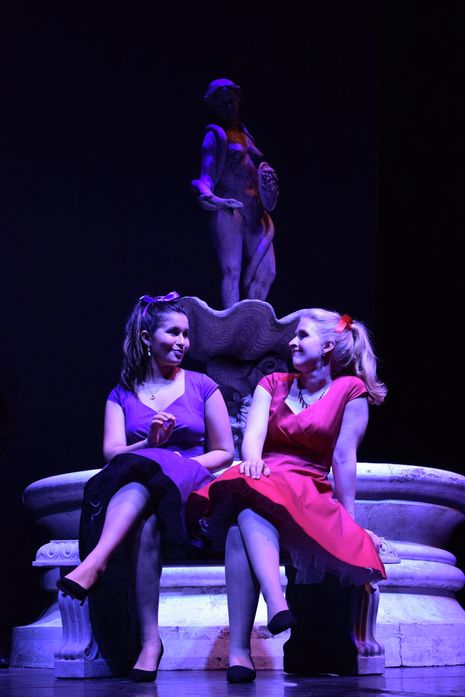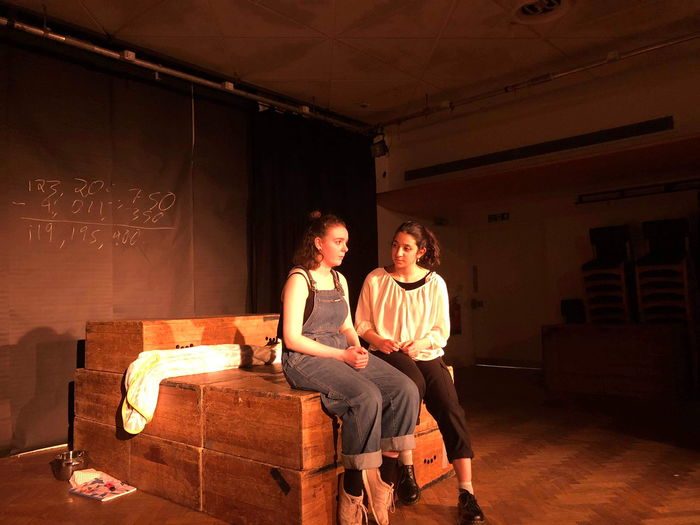La Cenerentola is a refreshing re-imagining of a familiar tale
Iulia Marin is enchanted and delighted by this rich and vibrant comic opera

What makes Cinderella Cinderella? The intrigue of the ghastly stepmother, the soul-stirring intervention of the Fairy Godmother or the sugary sweet happy-ending with the perfectly-fitting glass slipper? Cambridge University Opera Society challenges all these familiar medieval and magical stereotypes through their reinvention of the fairytale, this time set in 1950s Rome! Maddy Trepanier’s innovative vision, inspired, as she herself confesses, by the film Roman Holiday starring Audrey Hepburn, turns Ferretti’s original libretto into a performance proving that, unlike in Perrault’s original, in a more modern world, women can achieve without relying on the spells and enchantments of fairy godmothers.
It is indeed daring to tackle so popular a story as Cinderella, but the CUOS’s opera show outdid the original version through its sheer wit and moments of absurdity - Magnifico, the stepfather, has a ridiculous dream about a flying donkey. Despite all the well-written libretto, the translation of the original Italian lyrics could have been unabridged, as cutting from the original text seemed unreasonable at times. What was also striking was the sensation of omniscience given to the opera-goers multiple times, as all inner Cinderella’s inner thoughts were unveiled to them in real-time (“Farewell to my dreams!”).

Chloe Allison definitely deserved her role as a prima-donna, and this retelling of the original story brought to the audience's eyes a more complex Cinderella: unlike the classical stories’ main character, Allison appeared not just humble but full of energy and ambition. Tristan Stocks (Ramiro, the prince) and Louis Wilson (the valet) also switched roles flawlessly. The stepsisters’ (Anna-Luise Wagner and Anita Monserrat) biggest challenge in their roles was their sustained and impressive intensity of emotion as they were either head over heels for the prince or in a comic but bitter competition one against another. All the actors filled the stage with their own unique energy, adding to the vibrancy of the lighting by Deasil Waltho which served to enrich the entire show. Electra Pappa’s stage was innovative – a Renaissant sculpture gave a hint about the time in which the action takes place and, in contrast (the whole show combined tradition and modernity, after all), a washing-line hung up in the upper part of the stage was a continuous reminder of Cinderella’s impoverished background, while also serving to emulate a storm, shaking as if blown by the wind. A motorcycle also appears on the stage, creating a comic effect, sometimes (though perhaps not often enough) supported through Jess Beaumont and Anna Mochar's interesting and witty costume choices.
The show also aims to enhance the performance through choreography, though there were many moments when the members of the chorus were out of sync with each other, somewhat ruining the intended effect of the movement.
Most of the songs in this outstanding remake of the classic fairytale ended with a vivace finish, and this is an apt way to describe the general atmosphere of the performance. Apart from a few flaws that could almost be overlooked, La Cenerentola was a remarkable success of a performance, full of high notes (literally and figuratively)!
 Comment / Plastic pubs: the problem with Cambridge alehouses 5 January 2026
Comment / Plastic pubs: the problem with Cambridge alehouses 5 January 2026 News / Uni-linked firms rank among Cambridgeshire’s largest7 January 2026
News / Uni-linked firms rank among Cambridgeshire’s largest7 January 2026 News / New movement ‘Cambridge is Chopped’ launched to fight against hate crime7 January 2026
News / New movement ‘Cambridge is Chopped’ launched to fight against hate crime7 January 2026 News / SU stops offering student discounts8 January 2026
News / SU stops offering student discounts8 January 2026 News / Cambridge businesses concerned infrastructure delays will hurt growth5 January 2026
News / Cambridge businesses concerned infrastructure delays will hurt growth5 January 2026









